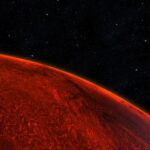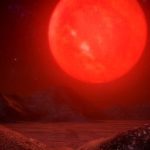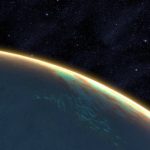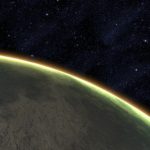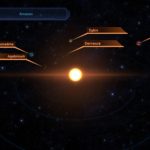System Specs:
- Stellar Mass: N/A Sol Masses
- Stellar Class: MIII
- Luminosity: N/A Sol
- Planets: 5
- Moons: 0
- Asteroid Belts: 0
- Asteroids: 0
- Objects: 0
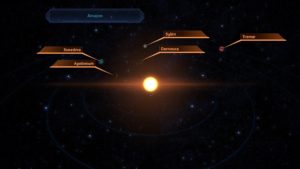
All of the systems in this cluster are named after rivers. This one is named after the Amazon River.
Amazon is a long-period intrinsic variable red giant, currently at the nadir of a 16-year cycle. At peak, its energy output doubles.
–
Planets Directory:
- Agebinium
- Derneuca
- Sonedma
- Sybin
- Tremar
–
Agebinium:
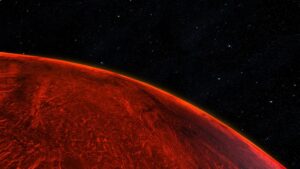
- Orbital Distance: N/A AU
- Orbital Period: 1.8 Earth-years
- Keplerian Ratio: N/A
- Radius: 4,910 km
- Day Length: 42.1 Earth-hours
- Atmospheric Pressure: 0.17 atm
- Surface Temp: −72 °C
- Surface Gravity: 0.79 g
- Mass: 0.465 Earth-masses
Agebinium is a small terrestrial world with an extremely thin atmosphere of carbon dioxide and krypton. Though the planet has sufficient mass to maintain a much thicker atmosphere, much of it has been blasted away.
The red giant Amazon is a long-period variable star, currently at the nadir of a 16-year cycle. At peak, its energy output doubles, lashing Agebinium with intense heat and radiation.
The crust is mainly composed of aluminum with deposits of tin. Much of the surface is coated with fine silicate dust, which easily penetrates the smallest cracks to foul machinery.
–
Derneuca:
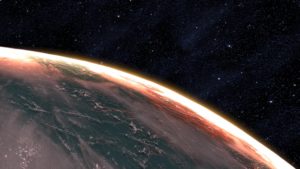
- Orbital Distance: N/A AU
- Orbital Period: 3.1 Earth-years
- Keplerian Ratio: N/A
- Radius: 11,728 km
- Day Length: 65.5 Earth-hours
- Atmospheric Pressure: 1.93 atm
- Surface Temp: −60 °C
- Surface Gravity: 1.8 g
- Mass: 6.041 Earth-masses
- Satellites: ~12
Derneuca is an enormous terrestrial world, nearly twice the size of Earth. Its environment is similar to that of Mars; arid, and a mix of craggy basalt highlands and sand-scoured deserts of iron-laced silicate dust.
Derneuca’s atmosphere mainly consists of carbon dioxide and argon, but the planet’s mass is great enough that measurable amounts of helium, and even molecular hydrogen, remain trapped in its atmosphere.
The planet’s gravity well is deep enough that it has collected nearly a dozen small satellites, most captured asteroids. Its surfaced [sic] is scarred by many large craters, marking the final resting place of other captured asteroids.
–
Sonedma:
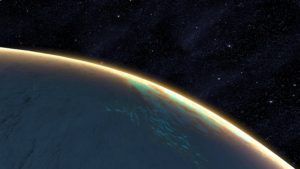
- Orbital Distance: N/A AU
- Orbital Period: 6.2 Earth-years
- Keplerian Ratio: N/A
- Radius: 9,647 km
- Day Length: 44.7 Earth-hours
- Atmospheric Pressure: 1.16 atm
- Surface Temp: −108 °C
- Surface Gravity: 1.2 g
- Mass: 2.725 Earth-masses
Sonedma is the second of the Amazon system’s arid “super-terrestrial” worlds. It is considerably less dense than its neighbor Derneuca and has an atmosphere of carbon dioxide and ethane. Its frozen surface is mainly composed of iron-laced silicates with deposits of sulfur.
–
Sybin:
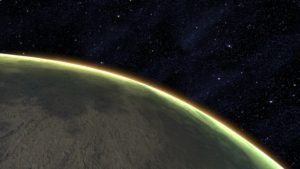
- Orbital Distance: N/A AU
- Orbital Period: 15.1 Earth-years
- Keplerian Ratio: N/A
- Radius: 4,645 km
- Day Length: 62.6 Earth-hours
- Atmospheric Pressure: 0.18 atm
- Surface Temp: −169 °C
- Surface Gravity: 0.5 g
- Mass: 0.263 Earth-masses
A small rock and ice planet, Sybin has an extremely thin atmosphere of hydrogen sulfide and ethane. Its frozen surface is mainly composed of magnesium and silicates with deposits of iron.
Sybin’s crust contains significant deposits of green serpentine, a mineral formed by volcanic activity. This suggests Sybin was a more geologically active world in the distant past.
Survey Text
“While scanning the planet Sybin, you discovered a large mine grid in geosynchronous orbit. With help from Navigator Pressly, your recon team recovered a small unmanned probe marked with the Quadim Outpost insignia.”
–
Tremar:
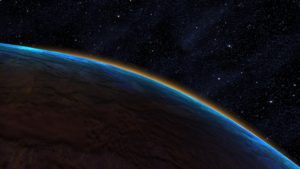
- Orbital Distance: N/A AU
- Orbital Period: 33.4 Earth-years
- Keplerian Ratio: N/A
- Radius: 61,266 km
- Day Length: 12.5 Earth-hours
- Atmospheric Pressure: N/A atm
- Surface Temp: N/A °C
- Surface Gravity: N/A g
- Mass: N/A Earth-masses
Tremar is a standard hydrogen-helium gas giant with traces of methane and nitrogen in its upper atmosphere.
–
gallery; pics of system orbits (also as page cover) and non-planet objects
video
